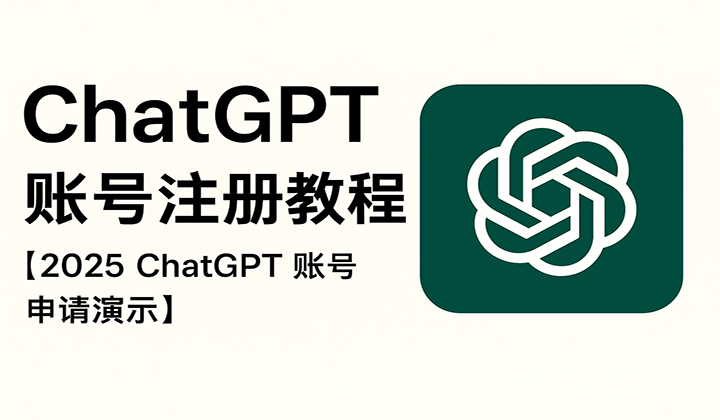How Cross-Border E-Commerce Sites Achieve Rapid Traffic Growth

Cross-border e-commerce independent sites, as e-commerce platforms targeting overseas markets, have core goals that are not just to showcase the corporate image but to focus on product sales and conversions. Compared with traditional domestic corporate websites, cross-border e-commerce independent sites rely more heavily on precise internet marketing strategies to rapidly acquire target users and ultimately facilitate transactions.
However, internet marketing covers a wide range of channels, including social media advertising, content marketing, influencer marketing, email marketing, and more. For a newly launched independent site, limited by manpower and resources, it is often neither realistic nor efficient to launch all marketing channels comprehensively. Therefore, selecting core marketing methods that highly align with the website planning is the key to early-stage development.
Among many traffic acquisition methods, search engine optimization (SEO), as a strategy that can deeply integrate with website content construction and has long-term return potential, is particularly important for cross-border e-commerce independent sites. SEO not only affects the website’s visibility in search engines like Google but directly determines whether users can find your products and brand through search behavior.
This article focuses on this core topic — how to achieve a breakthrough in traffic growth for a newly launched cross-border e-commerce independent site in the short term through search engine optimization, and explores practical methods related to website structure, content planning, keyword strategy, technical optimization, and more, helping you achieve the goal of "traffic maximization" under limited resources.
The structure of this article is designed to be concise and clear, with only three core chapters that are closely connected to form a complete and progressive logical chain. Unlike tutorials where you can skip around, this article focuses more on systematically analyzing the strategic thinking and implementation path of "how cross-border e-commerce independent sites can achieve rapid traffic maximization." Therefore, the author intentionally does not include a jumpable table of contents and recommends readers to read the article sequentially in its natural order to better understand the ideas and obtain complete information and practical operational guidance.
One、Principles of Web Content Planning for Cross-Border Independent Sites Targeting Focus Keywords

In the path of "how to achieve rapid traffic growth for cross-border independent sites," content planning centered on target keywords is the starting point and core of the entire traffic acquisition system. A website with a solid SEO foundation must first be built on precise keyword strategies and systematic content construction. However, this process goes far beyond simple keyword stuffing—it is an advanced planning task that integrates professional product understanding, marketing insights, and SEO technology.
Key Capabilities of Content Planning: From Keywords to User Intent
Truly effective keyword content planning requires site planners to have a deep understanding of the product or service while possessing the following SEO knowledge and practical skills:
- Understanding User Search Intent (Search Intent): Different keywords represent different user stages and behavioral intents, and the content must precisely match these.
- Building Pillar Pages and Topic Clusters: Using core keywords as the axis, structured content drives coverage of long-tail keywords to improve the overall site authority.
- Keyword Data Analysis and Competition Assessment: Developing a prioritized content publishing plan based on search volume, commercial value, and competition intensity.
- Mastering Search Engine Ranking Mechanisms: Including Google’s E-E-A-T (Expertise, Experience, Authoritativeness, Trustworthiness) signals, page loading speed, mobile compatibility, and other technical factors.
These elements collectively form the content planning logic for each page. Planners need to base their content outlines on these and work with designers to seamlessly integrate page content with visual presentation, creating pages that are both readable and marketing-effective.
Professional Teams Are the Core Support for Traffic Growth Models
Teams capable of completing webpage content planning and execution at such a high level generally possess top-tier industry expertise. This represents a results-driven, traffic-focused independent site building model, fundamentally different from a blind trial-and-error “learn as you go” approach.
This model places higher demands on cross-border independent site construction: not only must design and development teams have outstanding aesthetic and technical skills, but they also need deep SEO planning and digital marketing integration capabilities. Meanwhile, cross-border e-commerce enterprises themselves must have matching product strength and content collaboration to jointly build a site system capable of sustainable traffic growth.
Two、On-Page SEO for Cross-Border Independent Sites

On-Page SEO, commonly referred to in Chinese as “站内优化” (on-site optimization), is the most fundamental and core component of the SEO system for cross-border e-commerce independent sites. It focuses on how to improve search engines’ understanding and ranking ability of a page through the content structure and code optimization of the page itself. In the entire traffic acquisition process of an independent site, On-Page SEO is like the “foundation laying” first step, determining whether the site has the basic conditions to be friendly crawled and displayed by search engines.
A page with efficient On-Page SEO is not only easier for search engines to crawl, parse, and rank but also provides users with a clearer reading path and a good browsing experience. For cross-border e-commerce independent sites, this is not only a technical task but also a fundamental operation to acquire organic traffic and support sales conversion.
SEO-related HTML Element Optimization
Below are the most common and critical parts of On-Page SEO:
- Title Tag: Each page should have a unique
‘title’tag that contains the target keywords, which directly affects the click-through rate in search results. - Meta Description: Although it does not directly affect rankings, an attractive description to users can improve click-through conversion rates. It should accurately summarize the page content and embed keywords.
- Heading Structure (H1 to H3): Proper use of
‘h1’through‘h3’, and for deeper content even‘h4’to‘h6’tags, constructs the content hierarchy, highlights the main keywords, and strengthens the page’s semantic structure. - Alt Attribute Optimization: Add descriptive
altattributes to images to facilitate image search and improve overall page accessibility. - URL Structure Optimization: Use readable URLs that include keywords (e.g.,
/product/organic-coffee/) to enhance recognizability and relevance.
robots.txt and sitemap.xml control
Although On-Page SEO is “page”-centered, it also involves guiding the search engines through the overall website structure:
- Robots.txt settings: Used to declare which paths search engines should crawl or block, effectively controlling crawling behavior and avoiding indexing of invalid pages.
- Sitemap.xml submission and updates: The sitemap clearly informs search engines which pages can be crawled, and submitting it via Search Console ensures timely indexing of pages.
Content and keyword layout
Beyond technical code optimization, On-Page SEO also includes content optimization strategies:
- Natural keyword embedding: Keywords should appear in the title, opening paragraph, closing paragraph, and key sentences in the body, while maintaining natural semantics.
- Related keyword expansion: Properly include LSI (Latent Semantic Indexing) keywords to help search engines understand the semantic scope of the page.
- Internal linking strategy: Use anchor text links to other related pages to strengthen the relevance between pages, improving the site-wide crawl efficiency and authority flow.
Page speed and mobile adaptation
Page speed and mobile adaptation, although partly technical SEO aspects, can also be categorized as part of On-Page optimization:
- Improve page loading speed: Optimize image sizes, use modern compression techniques, reduce unnecessary JS/CSS files, etc.
- Mobile-friendliness (Responsive Design): Ensure the page displays properly on different devices, which is an important ranking factor for modern search engines.
Three、Properly Submitting a Cross-Border Independent Site to Google Search Console

In the operation of a cross-border e-commerce independent site, the Google ecosystem is undoubtedly one of the core channels for acquiring organic traffic. Whether for achieving rapid indexing of web content or monitoring the website’s performance in search engines, Google Search Console is an indispensable tool.
Compared to the complexity of third-party platform integrations, using Google Search Console is actually very simple—you only need a Google account to start configuring and using it. If you do not have a Google account yet, it is recommended to refer to the blogger’s article 《Google Email Registration Tutorial》 and quickly complete the account application and activation step-by-step.
Properly connecting your independent site to Google Search Console marks the official entry of your website into the search engine ecosystem. It is not only a key tool to improve indexing speed but also provides a reliable data foundation for subsequent SEO iteration optimization, traffic analysis, and search performance management. For a cross-border e-commerce independent site to maximize organic traffic, the correct and professional first step should be taken from the moment of site submission.
Create a Google Search Console Account and Add Your Independent Site
Once you have a Google account, go to the official Google Search Console website and log in to begin the site submission process:
1.Add Property: Click "Add Property" on the console homepage. The system will prompt you to choose a site verification method.
2.Select Site Type: The two common options are:
- Domain Method (Domain): Suitable for managing the entire domain, requires DNS verification, and is recommended for managing all pages under the entire site.
- URL Prefix Method (URL Prefix): Suitable for managing specific subdirectories or subsites, offers more diverse verification methods, and fits localized tracking needs.
After selecting the submission method that suits you, follow the on-screen instructions to complete verification. This usually requires adding DNS TXT records, HTML files, or Meta tags in your website backend to prove site ownership.
Submit sitemap.xml to Speed Up Content Indexing
After successful site verification, the next step is to submit your website’s sitemap to Google to help search engines discover your pages more efficiently.
- You can find the “Sitemaps” option in the left menu of Search Console. Enter the full URL path of your sitemap (e.g., https://www.example.com/sitemap.xml) and submit it.
- If your site uses CMS systems like WordPress, it is recommended to use plugins such as Rank Math or Yoast SEO to automatically generate and keep your sitemap updated.
By submitting the sitemap, Google will crawl and index your published content faster, giving quality content the chance to rank for keywords and gain organic traffic.
Getting Your Content into Google’s “Line of Sight”
Submitting your site is only the first step. The real key to having pages indexed and ranked lies in continuous content development and technical optimization. It is recommended to use Google Search Console in the following ways:
- Regularly check indexing status and error pages: Ensure new pages are indexed and fix issues like “Discovered – currently not indexed.”
- Review keyword impressions and click performance: Use the “Performance” report to see which keywords are driving traffic and adjust content strategy accordingly.
- Analyze page experience and Core Web Vitals: Utilize Core Web Vitals data to optimize page loading speed and user experience.
Conclusion
In the fiercely competitive cross-border e-commerce market, the ability of an independent site to acquire traffic directly determines its commercial success potential. From content planning centered on target keywords, to On-Page SEO optimization, and to building a bridge with search engines via Google Search Console, every step requires clear strategy and solid execution. A truly “traffic-maximizing” independent site is never built on accidental exposure or scattered efforts, but on systematic planning, technical implementation, and marketing awareness combined.
If you want to efficiently implement these strategies and build a cross-border e-commerce independent site that quickly gains natural traffic while combining creative visuals and user experience, feel free to contact Logic Thinking Digital Technology. We provide a three-in-one independent site design and development solution for overseas markets integrating visual design + user experience + marketing design. From content architecture, SEO planning, visual presentation to cross-border conversion mechanisms, we tailor a long-term competitive site system for you. Start now and get ahead at the starting line of independent site traffic growth.
This article is copyrighted by Logic Digital Technology (SZLOGIC) . Personal sharing and learning are welcome. Unauthorized use for any commercial purposes or reproduction of this article is strictly prohibited.


























